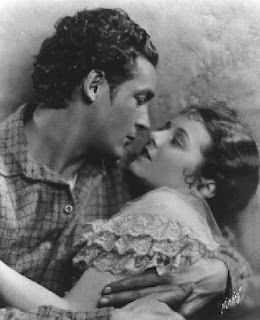I’ve been thinking more on the reasons some books are categorized as erotica and some as romance when the number or frequency of sex scenes, and the “heat level” thereof, is very similar. I don’t believe the degree of explicit language is always a factor; styles in prose language vary by author and, I think, by what’s in style at the moment.
One difference that came to mind is that in erotica, the reader is meant to invest in the main character (usually a woman, at least in the erotica I read). She can have multiple partners, and might or might not end up in a committed relationship. The point of the story isn’t finding a perfect relationship, it’s the heroine discovering her selfhood and being fulfilled.
Romance novels focus on a single pairing. The reader invests in the pair; even when the two characters are apart, their actions and thoughts tie into the relationship plot. Action plot is secondary to the relationship plot. Their individuality as characters is important because of how their individual traits contribute to or detract from the relationship. The point of the story is the relationship pair being fulfilled.
I also think the two types of journeys aren’t mutually exclusive. An erotic novel can also be a romance. A romance novel can include erotica; in fact, I think erotica in romance-marketed-as-romance used to be more common than it is today, perhaps because now there is more freedom to publish erotica for women as erotica.
I am wondering if the earliest epic “bodice ripper” romances of the 1970s might be more tinged with erotica than today’s romances. The plot could follow a single heroine through various relationships, for example an unsuitable or abusive marriage that later led to her relationship with the novel’s hero; or a relationship with the hero that might begin as unhealthy and gradually become more fulfilling. I recently read Anita Mills’ Autumn Rain, published in 1994, which I believe is a later example of this subgenre; though the hero appears in early scenes, and there is a kiss between him and the heroine, there is no emotional connection between them, and he soon goes overseas to fight Napoleon. Until the last third of the book, the story revolves around the heroine alone and her relationships with her controlling, elderly husband and his grandson. The novel is about her rather than her relationship with the hero, and even when their relationship begins, her romantic journey and her erotic journey (the hero takes her virginity) are intertwined.
Opinions? Comments?
Related posts:
Preliminary Thoughts on Two Types of Erotic Novel.
Defining Erotic Romance, Romance, and Erotica.

You're a very thinking woman. :)
And I think you're on to something. Recently I read Amazon reviews of a couple late 70s/early 80s "bodice rippers" that were amont my first "historical romance" reads, and the reviewers of the 1990s and early 2000s sure were irritated by the sexuality and tumultous relationships in the books – which goes to show what packaging does to expectations, but that's another topic.
For the longest time I had difficulty wrapping my head around the idea of the romance heroine being a (mostly) well-rounded adult ready to have a partner in her life. I thought the story was her coming into self-awareness, preferably with the hero's assistance, and their ultimate decision to continue on together, which was the story told by the early books I read.
It is my thinky thinky lizard brain.
I think some of it is that styles in fiction (that sells, and that people want to read) change, maybe in relation to changing social mores, maybe for other reasons as well. Getting a feel for that might be another good reason to keep up with reading current books in whatever your genre might be.
I read a lot of these in high school and my early twenties. The common element was generally that the woman could only discover her own sexuality through the hero. Never on her own. She was 'awakened' by him. What I would find powerful now, as a more mature woman, is a woman finding it on her own, not being 'taught' by a patriarchal male. Through multiple partners she discovers her sexuality and embraces it.
The common element was generally that the woman could only discover her own sexuality through the hero. Never on her own.
Ah-HAH! That is most fascinating. *more thinking ensues*
Elizabeth Lowell. She wrote 3 American West novels: Only You, Only Mine, Only His. She's even a bit later than the time frame we're considering. She wrote these in 1990. Very sexy and the woman is awakened by the hero in the context of the romantic pairing.
Barbara Cartland's regency romances…I read those from about 1972-1979. They vary in tone from basic to being close to erotic for the time.
Earlier, I read the various British 'current day' romances, Elizabeth Cadell, Mary Stewart. In those the sexuality is almost non-existent.
Works of this type stick with me because they were WRONG and I spent years thinking this was the way it was supposed to be! Ha!
How fascinating. I definitely agree that romance tends to be about the "couple". This echoes into other areas of life/entertainment as well. For example Hollywood is full of this.
It's always funny to me that the same people who look down their noses at romance will read tabloids covered in pictures of "Bennifer, Brangelina or MerDer (from Grey's Anatomy).
Minx
I've noticed a lot of young adult novels recently that, even if mainly the plot is an action plot, there is at least a SUGGESTION of a romance between two characters.